Progress at Lake Poinsett
ON 09-16-2020
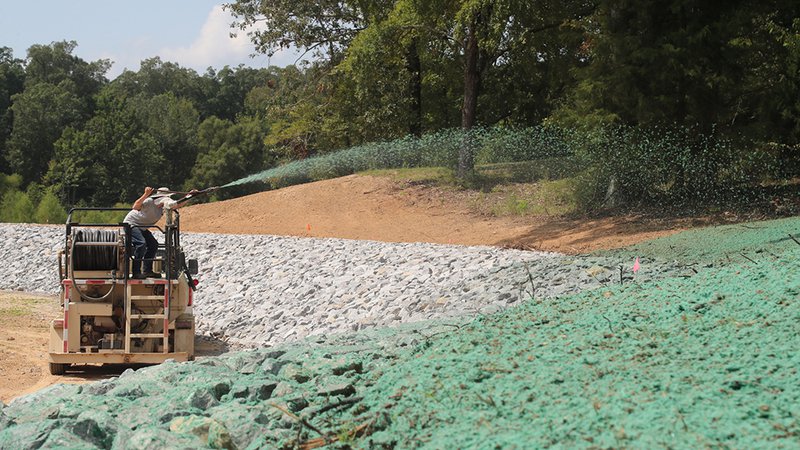
Sept. 16, 2020
Randy Zellers
Assistant Chief of Communications
HARRISBURG — As trucks unload large gray riprap and spray improved shorelines with grass seeds and fertilizer around Lake Poinsett in Poinsett County, Brett Timmons and his natural resources program technician, Tristan Bulice from Arkansas State University, continue to drag artificial habitat structures to the bed of the lake, nearing the end of a three-year marathon. The 471-acre lake has been dry since 2017 to complete a massive renovation involving many moving parts.
Originally constructed in 1961, Poinsett has held a healthy reputation in Northeast Arkansas as a great destination for crappie, redear and catfish. But managing a fishery is a constant battle against the elements to prevent erosion and deterioration of the lake’s infrastructure while maintaining the habitat under the surface. Timmons, regional fisheries supervisor for the AGFC in Jonesboro, has been hard at work in that battle since he joined the AGFC in 2012.
“I’ve heard Commissioners comment in the past about the challenge we have in fisheries management,” Timmons said. “Most of the work and the outcome is hidden from the naked eye under water, so it’s a difficult thing to measure against results of work that’s more easily seen.”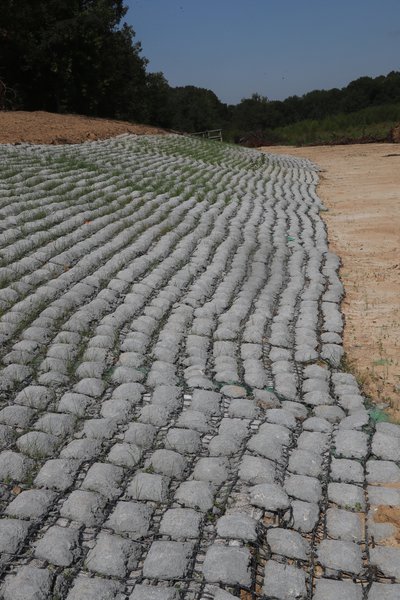
That under-the-surface nature of lake management was illustrated in 2017, when after nearly 60 years, the infrastructure of Poinsett began to fail.
“Materials and construction techniques used at the time of Poinsett’s construction typically have a 50-year lifespan,” said Ben Batten, chief of the AGFC’s Fisheries Division. “At nearly 60 years old, the infrastructure of Poinsett had reached a point that repairs would be needed for the lake to continue providing the quality of fishing anglers had enjoyed for the last six decades.”
Work of this magnitude is much more than pushing some dirt with a bulldozer. Construction was complicated with the primary soil type surrounding the lake being loess soil and the area along Crowley’s Ridge in Arkansas being in an earthquake zone. Engineering, construction and ultimately the success of the project hinges on many factors like soil type, topography of the entire watershed that flows into and out of the system, and current condition. The repair work done at Lake Poinsett is one of the most expensive lake renovations undertaken by the AGFC to date. Including the extensive shoreline stabilization project, complete removal and replacement of the water-control tower and retrofitting of the outflow pipe and renovation of the auxiliary spillway, the cost of the completed renovation will exceed $3.2 million.
“Last year, only four major construction projects were underway by the agency, and Poinsett was one of them,” Batten said. “We currently have 15 other dams that are in need of some repair work, and we anticipate more work like this in the future simply because of the age of most of the infrastructure. But the benefits after these renovations make them worthwhile”
Slow Drain
Problems with the lake began to surface when shoreline erosion was documented a little over 10 years ago. This erosion became larger over the years and a plan to stabilize the shore was developed by the AGFC’s Arkansas Stream Teams program. But in 2016, a significant failure to the water-control structure rendered it inoperable. The following spring, officials at Lake Poinsett State Park noted that the lake level was dropping significantly. Contractors with the AGFC determined that the housing where the outflow pipe attached to the water-control structure had given way, allowing water to escape the lake with no control. 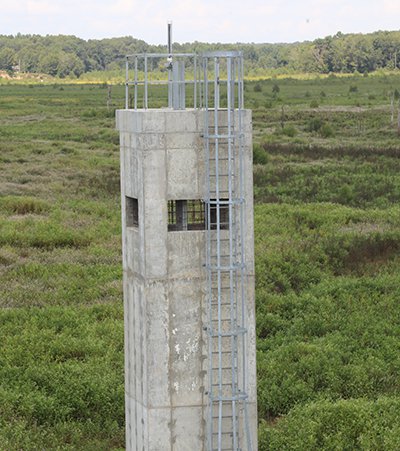
“The water-control structure needed to be replaced, and to do that you have to drain the lake completely,” Batten said.
Timmons said the work to complete the water-control structure was impressive.
“They drove steel beams 50 feet into the ground to provide a solid footing, then built up from there,” Timmons said. “Luckily, the dam was sound and the outflow pipe was still in good enough shape that they were able to repair and reinforce the pipe through an injection process instead of having to dig or auger a channel for a new pipe entirely. The finished product will likely last at least as long as the previous materials.”
Construction companies have also been hard at work placing riprap and erosion-control materials called “Flexamat” to replace eroded shorelines and prevent further damage.
“The riprap will block erosion, and the Flexamat will allow grass and other vegetation to grow within it to help stabilize slopes,” Timmons said. “Thousands of feet of shoreline have been repaired during the renovation.”
Angling Improvements
The renovation should be an exciting time for anglers, as Timmons expects good things from the dry period between the time the lake was drained and its expected refilling at the end of this year.
“Any time you draw down a lake and allow that lakebed soil to dry out and crack, you’re releasing nutrients back into that system when it refills,” Timmons said. “And the brush and grasses that have been allowed to grow during the construction time will add instant habitat for baitfish when we begin to restock. The breakdown of that vegetation also will add nutrients to the lake, promoting a boom of growth similar to what you see when a lake is first constructed.”
Timmons says anglers should see excellent rewards for their patience in the project, with good fishing only a few years after the lake is filled.
“We’ll stock catchable-size channel catfish as soon as we think the lake can support them for some instant gratification, and we’ll stock forage species in 2021 to let them get a good head start on the game fish to give the lake a good foundation,” Timmons said. “In 2022, we plan to stock bass and crappie. If all goes as planned, anglers should see some excellent fishing within four years or so.” 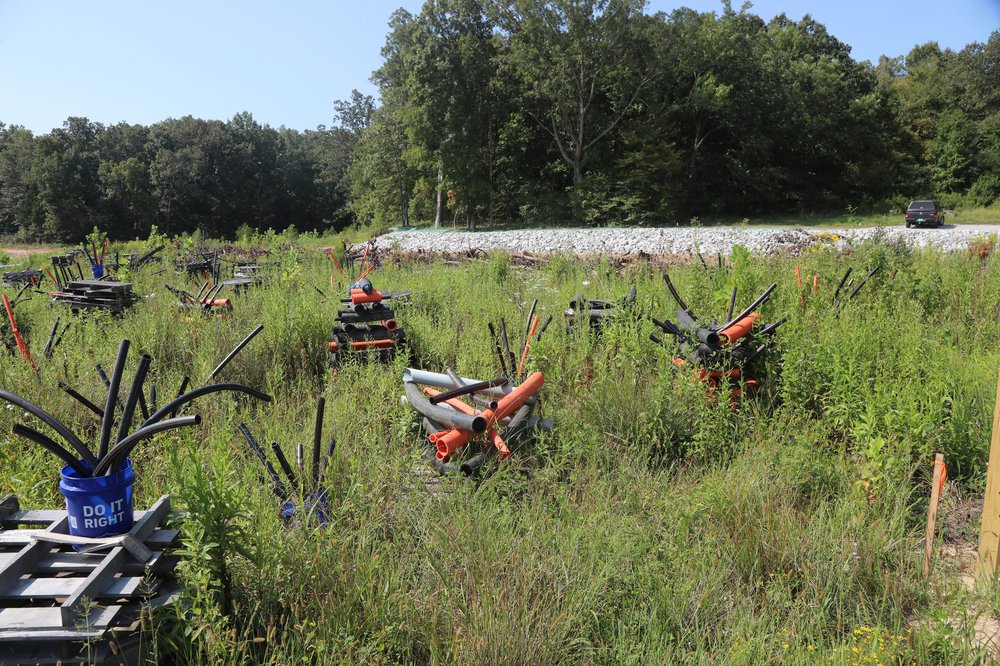
Pallet Palace
Timmons isn’t leaving the habitat solely up to Mother Nature. He and many other AGFC staff have been hard at work adding extra bits of cover to increase the habitat throughout the lake.
“We added more than 4,000 pallets to the lakebed in July alone as fish habitat,” Timmons said. “I’d say we have somewhere between 7,000 and 8,000 pallets in fish attractors throughout the lake at this point, and we get more on a weekly basis.”
The pallets have been placed in different stacks and shapes in areas that were historically good for fishing and in new areas biologists determined would be likely hot spots when the lake refilled. Instead of weighing them down with concrete blocks, like they would do if the lake were full, Timmons and his team are able to strap the pallets down to the lakebed with steel cable and anchors driven into the ground.
“I’ve sunk a lot of cover for fish in my lifetime, and this is one of the most efficient ways to make sure it stays in place,” Timmons said. “But you have to have a renovation like this where the lakebed is dried out to do it.”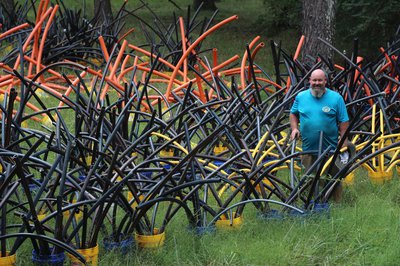
Along Came a Spider
In addition to the thousands of wooden pallet structures, AGFC staff have been building PVC fish attractors called “spider buckets” since the project began and is placing those in key areas of the lake. Fishing piers and areas near banks where anglers can access them easily will be crawling with spider buckets when the lake is allowed to fill.
“I’ve had extra help and interns building these using 5-gallon buckets, some concrete and PVC pipe that was given to us by Crittco Cable and Fiber, NEA Construction and Craighead Electric,” Timmons said. “They use the pipe to shield underground cables, but they always have some odd lengths at the end of the spool that can’t be used. They have given us miles of this odd-sized pipe that would have otherwise been headed to a landfill. Now it’s going to be great attractors for baitfish and sunfish.”
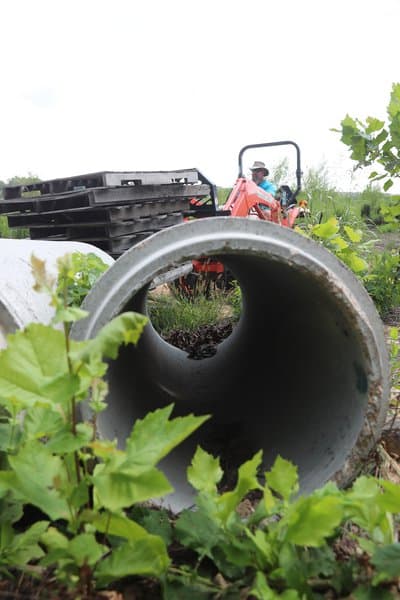
Lunker Bunkers
Pallets and spider buckets aren’t the only pieces of cover being added to the lake while it’s dry. Concrete culverts weighing more than 2,000 pounds apiece also have been placed along portions of the lake. These concrete tubes not only offer hard surfaces that attract fish, they make ideal ambush cover for larger fish.
“Catfish and bass really like these sorts of features on the bottom,” Timmons said. “It offers a different, larger space that they prefer, and we have tried to place them in groups to increase the attractiveness of the site for some of these bigger fish.”
Partnerships Provide
Timmons credits much of the success with the habitat work done so far to amazing partnerships from local construction companies and a nearby steel mill.
“We have had some great support throughout the entire project,” Timmons said. “From the local school who worked with us on habitat projects through their EAST program, to companies providing the thousands of wooden pallets and other materials we’ve used, I can’t say enough about the help we’ve received. This lake truly is a part of this community, and we really saw the community step up to help out wherever they could.”
Timmons says the contractors also have been exceptional throughout the project.
“There are plenty of habitat components the contractor did while he was working that were just above and beyond his quoted job,” Timmons said. “He would drag concrete tiles out and set up extra habitat sites while he was on his way back and forth to do other work in the lake, and just was always happy to help even without us asking.”
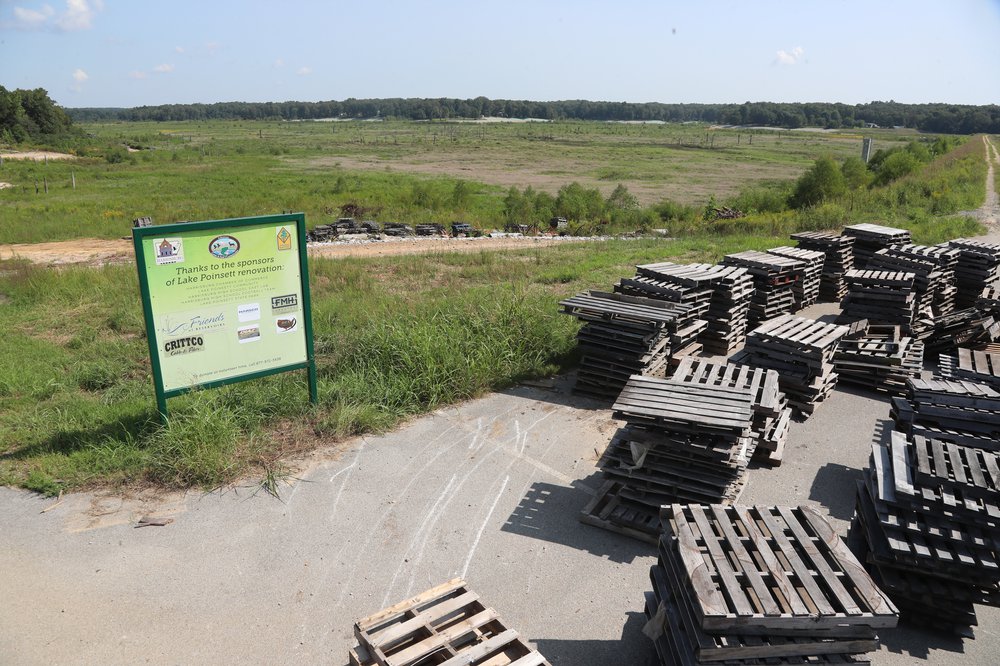
Recent News
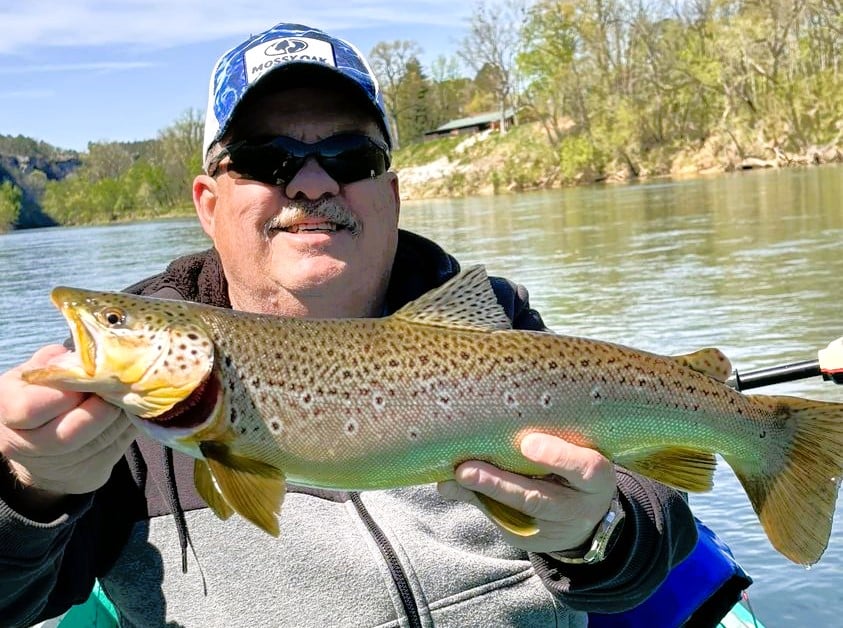
Arkansas Wildlife Weekly Fishing Report
Apr. 18, 2024
Subscribe to Our Weekly Newsletter E-mails
Don’t miss another issue. Sign up now to receive the AGFC Wildlife Weekly Newsletter in your mailbox every Wednesday afternoon (Waterfowl Reports are published weekly during waterfowl season and periodically outside the season). Fishing Reports arrive on Thursdays. Fill in the following fields and hit submit. Thanks, and welcome!

